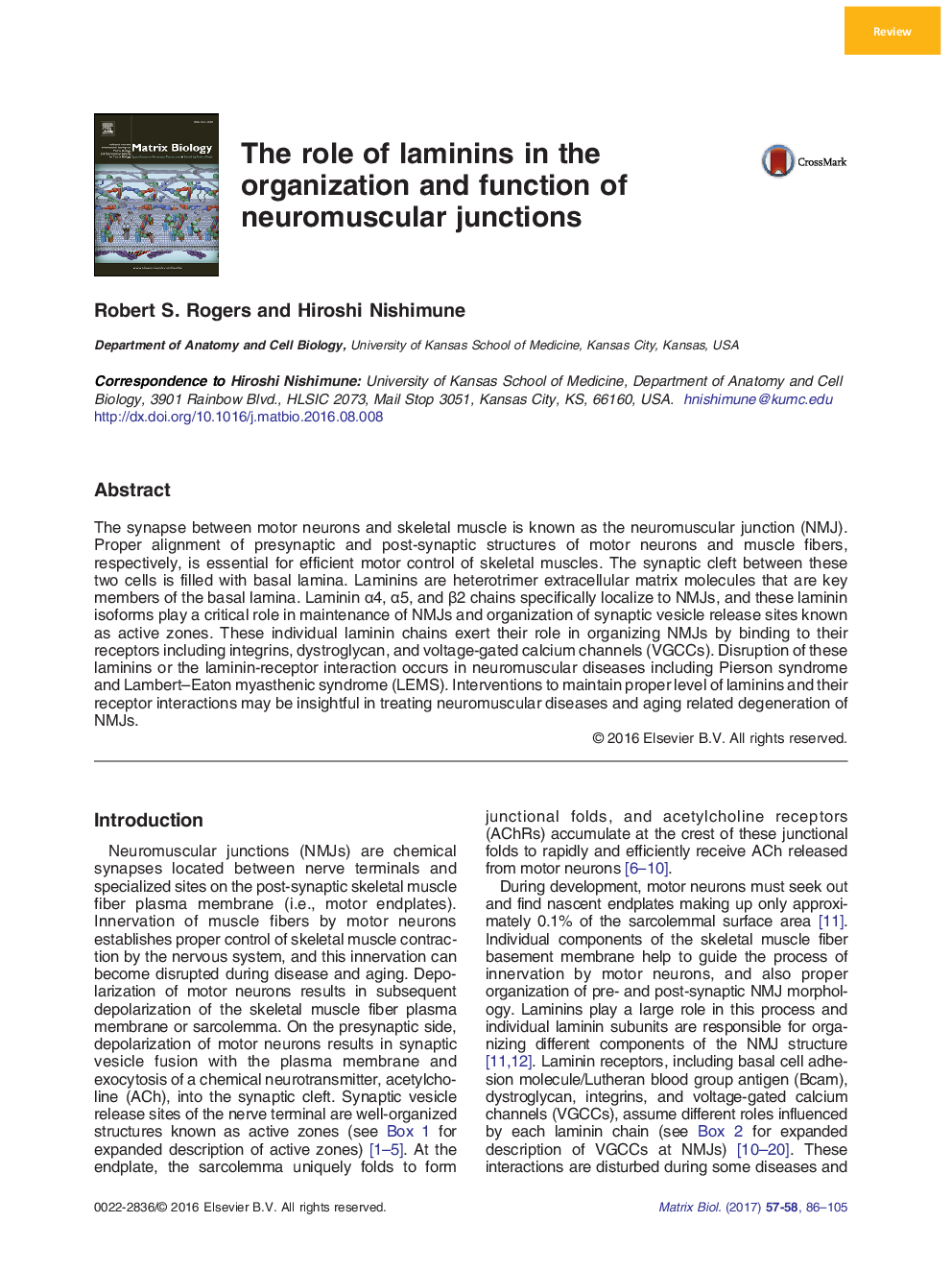| Article ID | Journal | Published Year | Pages | File Type |
|---|---|---|---|---|
| 5528522 | Matrix Biology | 2017 | 20 Pages |
â¢Laminins are heterotrimer extracellular matrix molecules and laminin α4, α5, and β2 chains specifically localize to NMJs.â¢Synaptic laminin isoforms play a role in NMJ maintenance and active zone organization.â¢Integrins, dystroglycan, and voltage-gated calcium channels are receptors for synaptic laminins.â¢Disruption of synaptic laminins or the laminin-receptor interaction occurs in neuromuscular diseases including Pierson syndrome and Lambert-Eaton myasthenic syndrome.â¢Synaptic laminins may play a role in the beneficial effect of exercise for NMJ maintenance during aging.
The synapse between motor neurons and skeletal muscle is known as the neuromuscular junction (NMJ). Proper alignment of presynaptic and post-synaptic structures of motor neurons and muscle fibers, respectively, is essential for efficient motor control of skeletal muscles. The synaptic cleft between these two cells is filled with basal lamina. Laminins are heterotrimer extracellular matrix molecules that are key members of the basal lamina. Laminin α4, α5, and β2 chains specifically localize to NMJs, and these laminin isoforms play a critical role in maintenance of NMJs and organization of synaptic vesicle release sites known as active zones. These individual laminin chains exert their role in organizing NMJs by binding to their receptors including integrins, dystroglycan, and voltage-gated calcium channels (VGCCs). Disruption of these laminins or the laminin-receptor interaction occurs in neuromuscular diseases including Pierson syndrome and Lambert-Eaton myasthenic syndrome (LEMS). Interventions to maintain proper level of laminins and their receptor interactions may be insightful in treating neuromuscular diseases and aging related degeneration of NMJs.
